







nice landing ...


T H E A N T H O N Y J. R I C H T E R
Antiquities/artifacts that make up the collection are drawn from the first 10,000 BCE proto-civilizations and civilizations known to humanity as at the start of the 21st century
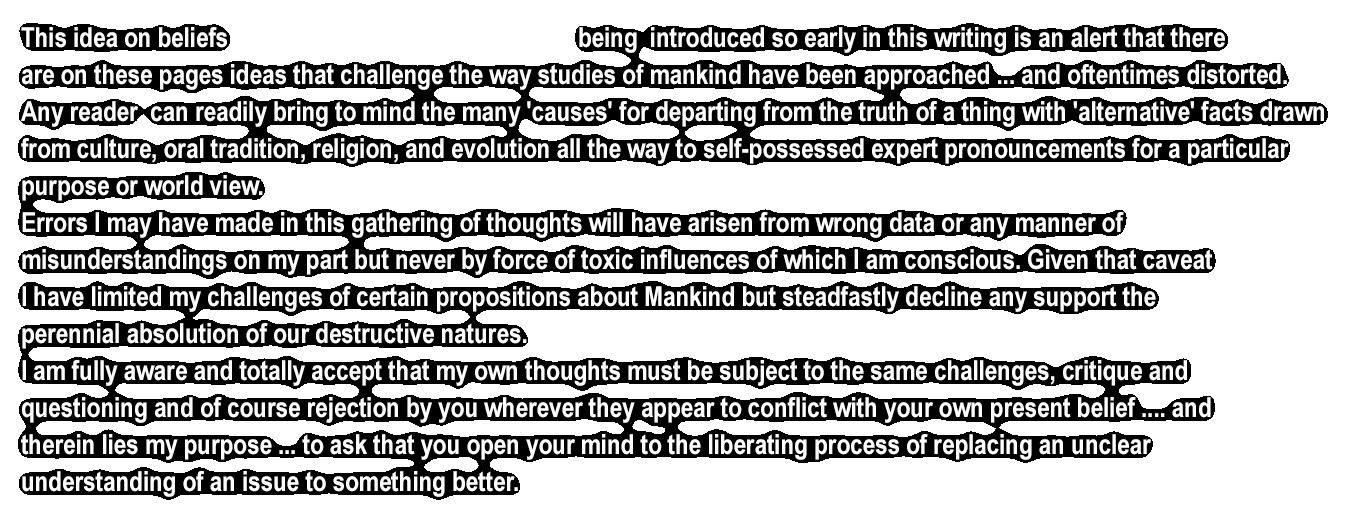

Write your text here...
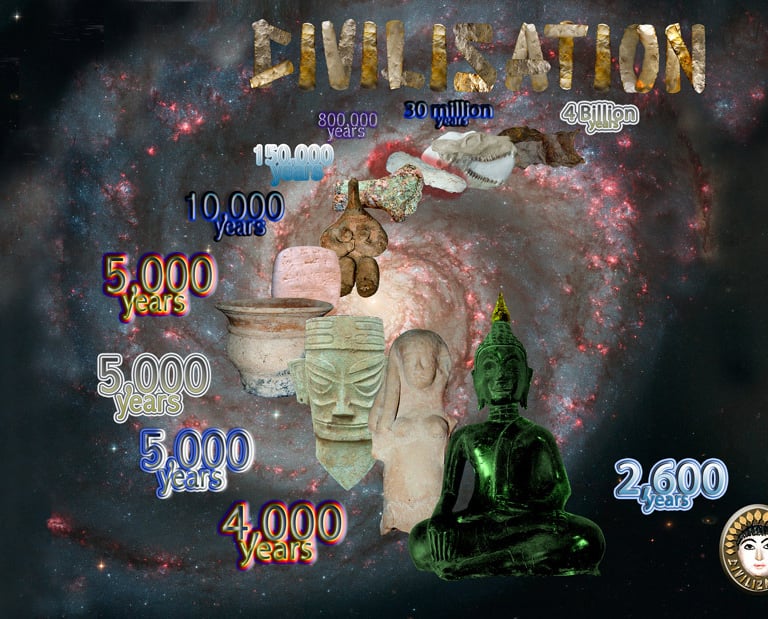

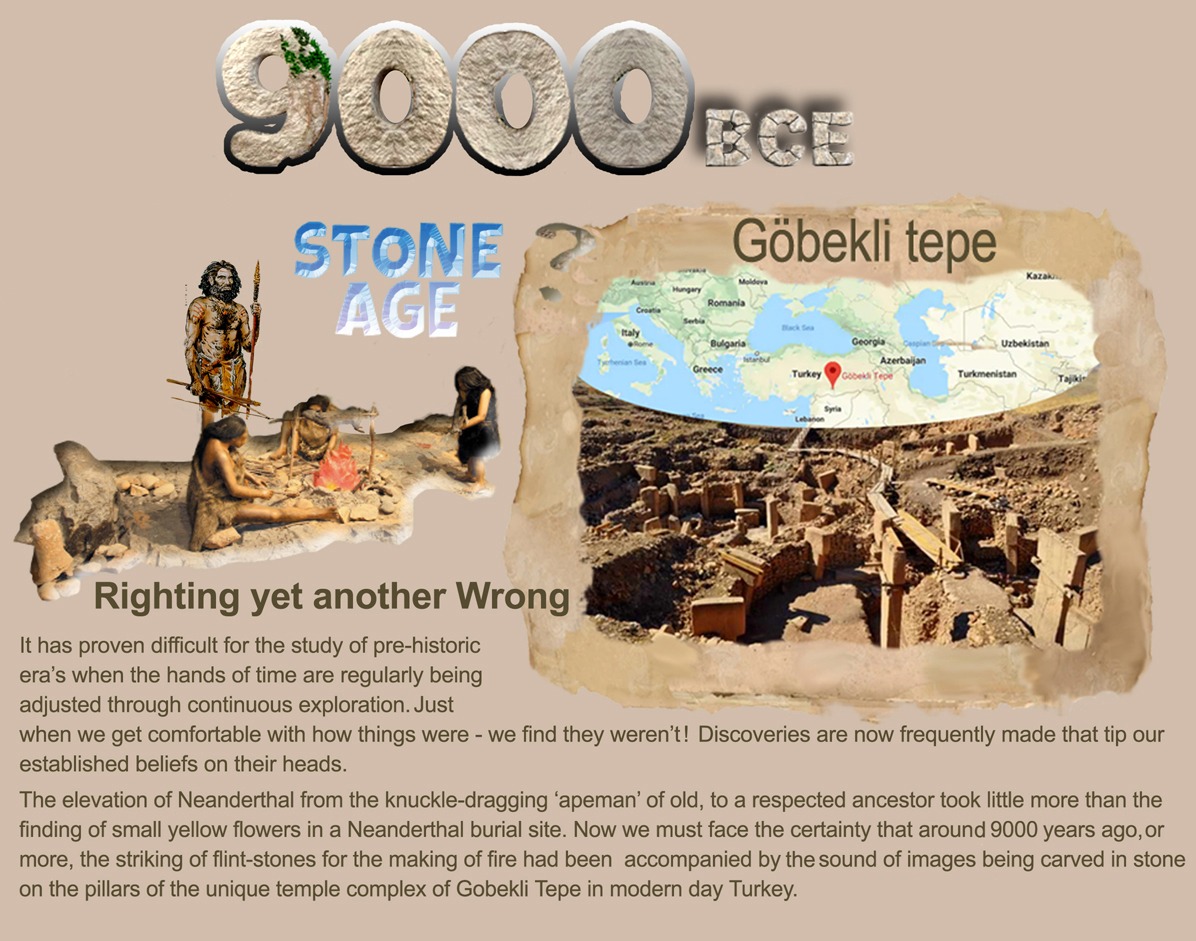

AN often unseen wonder of HUMANITY is its astonishing diversity: Objects and artworks from the Civilization collection SEEN IN THESE PAGES show the creative variation That are each Expressions of countless cultures THAT HAVE EXISTED WITH COUNTLESS THOUSANDS OF OTHERS WE MAY NEVER KNOW
Where thought useful, links to major museums or galleries are placed beside various exhibits to read of alternative interpretations of histories that may attach to the artifact we have chosen to display.
The Artifacts, objet d'Art, exhibits, artworks, seen in these pages are each parts of the CIVILIZATION COLLECTION and are the property of the Richter Civilization Trust. The Graphics, illustrations and artwork are original copyrighted works of A J Richter.
Given the unfortunate absence of expertise from some 'experts', the building of this website necessitated an unpleasant return to the phenomenon of the Expert: Defined by me as 'a reliable source of data, informed thought and scholarly discourse'. It would be wrong to imply that the absence of expertise is the prevailing state in archaeology but opinions on matters of time, place, circumstance or causes in our distant past have too often been determined not by defensible data but by the contemporary preference of an ill-informed speaker: Not what a thing is but 'what it should be'; Not where things were but 'where I expect them to be'.
Some readers may believe I have elevated myself to a place enabling me to judge what constitutes an expert when in fact the goal is to present markers or alerts that can be useful guides to whom you will listen to or read. Fortunately, I have the luxury of not needing to be an expert in this field, and the experience to know who is. The one, and the only conclusion ever wholeheartedly agreed to by those interested in the topic of early Man, is that there are civilizations we have yet to meet: Those that are almost certain to have existed as far back as we wish to imagine. Special Note re. experts: Harvard Kennedy School (see Button link)
A remarkable achievement of experts: Report; July 27, 2023. In a Harvard Kennedy School survey of 150 academic experts in the United States on the issue of Misinformation was the conclusion that … “The most agreed-upon future direction for the field of Misinformation was to collect more data outside of the United States”.


When thinking of ancient man, we make a comfortable jump and land at a wonderful cave just as the family sink their collective teeth into a prime piece of Sabre-tooth Tiger. We have arrived in the very well known 'stone Age' in the year of A-long-time-ago. The so-called stone age has captivated our imaginations for centuries. There were cartoon 'film Features' made of the 'Rock Age' as long ago as the 1930's through to Betty and Barney Rubble ending in 1966. The Stone Age continues to retain its unusual popularity due possibly to a pervasive error of 60 million years. So far as we can can tell Man has never seen a living Dinosaur. He has never eaten one nor has he ever ridden one.
Now, in pursuit of a higher level of education we stamp both feet outside the cave, causing two names to rise slowly through the ancient sands: Paleolithic and Neolithic. Stones and Rocks 101. Lithic is what Greeks called rocks. Paleo is what separated a very old rock age from the Neo (think Matrix) much newer 'rock-age'. Just so we are clear: no stones had their ages changed nor at any time was the demeaning title of 'pebble" used during the writing of this important work.
Even with that deep and meaningful dissertation - we still have a problem: At that so-called 'rock-ape' time of wrongly presumed beetle-browed, knuckle-dragging crotch-scratching nitwits it seems that not everyone dressed quite like Barney Rubble. Breaking News: 'Recent discoveries show that a nascent civilization of sorts was forming at Catalhoyak in modern day Turkey. That puts a proto-civilization on the same time-zone as true Stone Age people'. Note: Neanderthal DNA does still exist in our civilizations with adorable crotch-scratching as popular in the 21st century as it ever was.
"It would be helpful as a species to find our limits before they find us".
A popular piece of hilarity in the physics faculty is the observation that 'Entropy ain't what it used to be!' As certain as that statement applies to all matter of the Universe - it is equally relevant to species. It doesn't matter which species we conjure up since the formula is easily followed: If it lives ... it changes. Images of hairy ape-like humans appeared to us in our earliest school years and even now make their overexposed appearance anytime a never-before-seen fossilized hominid toenail or some equally Nobel-worthy bit of our hairy ancestors is discovered.
So what? ... Who cares? I do, a little. Most don't and I can find no reason they should. However, that is not the real issue. Whether we once had two heads, were covered in feathers and shambled along one leg shorter than the other is fodder for the curious or paleoanthropological scholar. The mostly unrecognized and vitally useful question is how we got from 'there' to here? ... and from here to where? Indications are that humanity is more likely to be less curious about our primate past than in knowing whether the effect of the 'shorter leg' had ancient hunters running in ever-decreasing circles.
IMAGINE: A pack of African 'painted' dogs have assembled on the western side of the Namib desert. They are ready to follow their Alpha leader on what may be a 160 km journey to the eastern side of the trackless sandy desert. For comfort sake the reader may safely assume the trek is intuitively driven and has something to do with better hunting. The exercise I am forming has no interest in their destination but is entirely focused on the question of 'how did they find their way to the other side?
Significant to this exercise is that in the early 2020's NASA's Earth Observatory had detected strong winds from the south of the desert that had eventually built long linear dunes in the Namib Sand Sea. And it is here we find a pivotal element in the dogs' epic journey. For the curious, the 'Painted' African dog can survive traveling up to 50 km a day for three days without water. On an east-west track the Namib can be as narrow as 60 km. For the dogs, the navigational instinct that works perfectly well on the Savannah is somewhat less useful on a trackless sandy desert. The dogs quickly learn to rest during the heat of the day and travel almost entirely at night. We now have grounds for ruling the sun out as a central navigational source of the pack's direction finding. Further information reveals that only a very small number of land based animals are known to use stars for navigation and dogs are not among that number.
Cutting to the 'chase'. *Most objects, will travel in a straight line unless acted upon by an external force, like a change in medium or a reflection. The science behind traveling in a straight path is called 'rectilinear propagation,' This is not a class in physics and the dogs are not photons. Whilst it's true that dogs have no special inclination to walk in straight lines ... to know the future location or direction of either a photon or dog we must establish with some level of confidence from whence they came.
And this is the crux of so much of what matters to our hominid line. To know the future location or direction of either a photon, dog or man we must establish with some level of confidence from where they each came. Other useful data would be how and why they came. When a challenging query is put and includes in it a pinch of science it can seem a little less of an admonishment of our apparent lack of interest in our own past: Distant as it pragmatically is.
Whilst many fairly imagine the right place to start looking for the tracks of man would be among the Neanderthal, Denisovan, Cro Magnon and maybe Homo sapiens ancient. Without the very least doubt this is infertile ground. We don't know if we slept with them, went to war with them, became allies against enemies common or separate. We (meaning the survivors) may have slaughtered them all in their sleep or helped them out in a tough winter. I have often suffered the trumpeting of traces of breadcrumbs that are promptly heralded, (triumphantly) as being from fully formed and well defined loaves of bread without an oven or baking dish in sight.
A productive human 'footprint of discovery' could become more fruitful by stiffly limiting path-markers or 'signs' of what may be a pointer or data point of our early activity. This may also put a dent in the peddling of pet-theories fitted up for a favoured belief. The idea of 'less being more' is fine, and reasonably non-limiting, especially if it in any way yields powerful evidences of Hominid motive which can then be put to a part-answer of WHY.
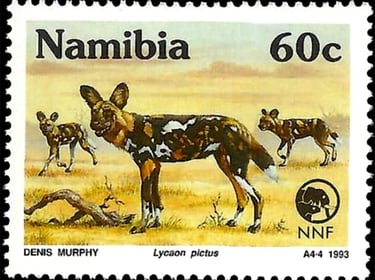

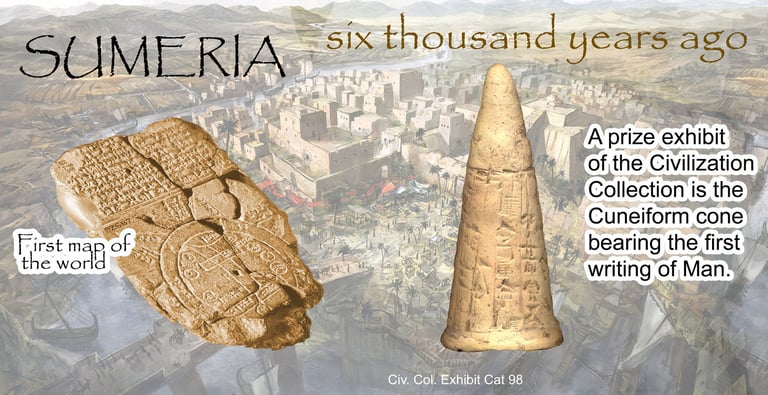

A fun argument for 'Creation': I wondered if I would live long enough to discover whether the fabled 'missing link' for Mankind existed. I did. It didn't.
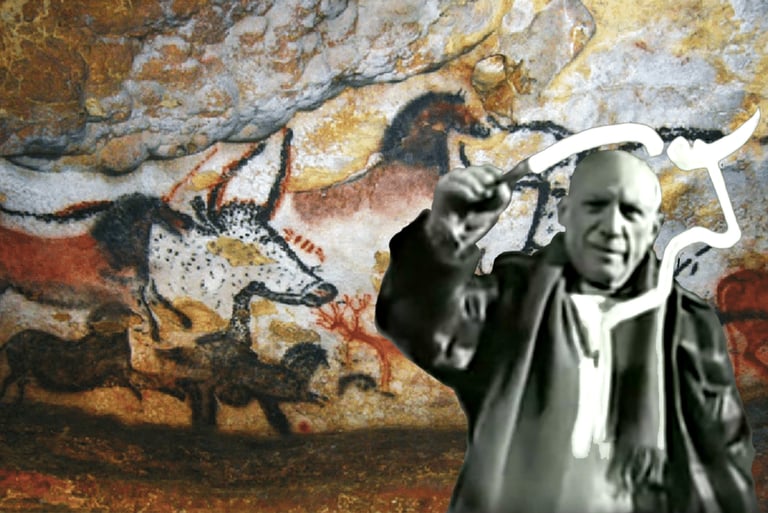

Lascaux Cave paintings Pablo picasso painting inserted
It seems unlikely that a writer would begin their expressions of a belief without leaving space on the page for doubt. My perceptions of humanity are presented in that way. I do realize that I, like countless others that are sufficiently foolish, bold or brash, to point out one or two of man's shortcomings will forevermore be reviewed as 'misanthropes' and become the subject of endless ire, memes and trolls: I give you my personal assurance I wouldn't do this if I didn't believe even that could be fun.
On having very often skirted the borders of 'Misanthropichood' I would on such occasions painstakingly research the most recent definitions of the 'title' misenthrope. Having done this for more than 55 years I am happy to report we have finally reached a milestone of having more definitions of a misanthrope than we have actual misanthropes. To my knowledge this is an achievement unparalleled for us or for any other presently known species.
As in all thought, balance is an ally. Contrasts in human ex- perience are legion. For Good we have Bad. For complex - simple: I shall confidently leave the reader in command of countless other antonyms. I have bought antonyms to the minds that might, without seeing, imagine that the images I present have satisfied what I believe to be the entirety of humanity. Before contemplating 'The Paradigm' image below which I most sincerely hope you will, Mark Twain, by divine right gets the first observation.
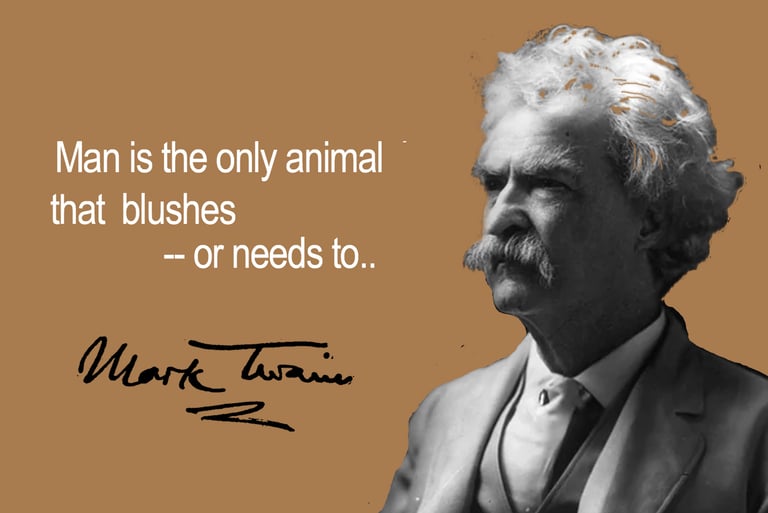

HUMANITY ... The Bad, the really bad, the good and the hurt.
HOMO SAPIENS
a person of interest .....
HUMANITY DENIAL
As a starting point of my efforts to better understand Homo Sapiens-sapiens it was essential to go beyond reading the nonsensical scribbling produced by the Anthropological Institute of Wild-Eyed Guesses. For this reason and a drive to get more personal insight to our species true nature, I began the Civilization Collection.The collection, now comprised of 400 or more exhibits, represents Man's oldest known civilizations - somewhat before humanity's first writing then onward.
Times prior to the civilizations of Sumeria and those of the Indus Valley could be thought of as proto-civilizations that began around 10,000 BCE. with the Civilization Collection tapering at around 750 ACE. Of principal purpose the collection represents a path of artifactual breadcrumbs: A path when followed gives a sometimes uncomfortably higher resolution of mankind and the bumpy ride he has had through to civilizing.
Antiquities as data, do accurately reflect the evolving stages of a civilization. Through its written records, its conflicts and art there are intriguing periods in an evolving civilization when cultural transition are wonderfully visible in art, style, color texture and form. It may be surprising to know the gifted artist Pablo Picasso would be comfortable dashing off a 'bull or two' in the 20,000 year old gallery in the Lascaux caves in France. Not averse to publicity he would definitely snap a selfie.
In reading even this limited applause of what might be thought prosaic objects of the past, archaeologists and anthropologists of all stripes are choking back tears of professional despair as they ponder the spectacle of an otherwise seemingly 'educated' person uttering such ill-informed banalities. What neither of these admirable professions will confess is how special they feel about being among the few that will actually hold the artifacts of antiquity: To smell them, (many have odours) to touch them. How many of our increasing billions of fellow humans have never had or will ever have that experience. It is unfortunate to my mind that billions will never see such wonders let alone feel them.
It has always seemed apparent to me that the seeds of all answers lie in the question. Of the first of many questions that have mattered to me is one that would reveal a way to reconcile ourselves with the stark reality of what presents as Man's true nature. There has always been a need to challenge how in light of my own childhood, family tragedies - mine and others, later personal experiences and the torment of knowing of the suffering experienced by hundreds of millions of innocents through interminable wars and man-made tragedies I or any caring other could not arrive at the conclusion but that Mankind is an immutably flawed species.
On cue the cry misanthropy! goes up in hopes of diminishing the implication that Man is anything less than divine. The underpinnings for the first knee-jerk reflex is the religious view holding Man to be made in the image of his creator: That first misconception is faithfully followed by the use of any word or belief that would divert suggestions that an all-embracing criticism of Mankind must by default be a censure of every representative of the species. That cannot be true.
Decades have passed in the ongoing search for thoughts and words that I could form in an order that would capture the complexity of us as a species without either shrinking from the horror of man at his worst or to wrongly blend in the good and arrive at the error of seeing mankind as some collective degrees of iniquity.
There exists an almost overwhelming number in our population that are critical of any effort to ‘capture’ humanity in this way on the grounds that the enigma of Man is beyond any ‘parochial’ arrangement of words: Perhaps words more acceptable to those with this view should be elevated, more ethereal perhaps in their embrace of the 'flawless inscrutable divinity of man that is ineffable’! Wow ... I'm feeling more and more superior by the minute.
Many of the naysayers could find it instructive to examine why they feel so compelled to resolutely oppose any acknowledgement of our own reality: It may feel to some, that admitting to our flawed selves is a perilous thing being fearful of seeing themselves in the definition. Since my childhood Man has never seemed remotely close to flawless, enigmatic or inscrutable – in any direction.
This conclusion, is a belief that to continue as we are, offers no more or less than we have ever had or will have. Defensive counter-punching is understandable but will occur on the wrong assumption that a 'flawed species' means the wholesale condemnation of every member of the species: this unthinking reaction seems impervious to evidence showing countless humans capable of selfless life-giving sacrifices, breathtaking heroism and fathomless compassion. Equally inescapable is that an overwhelming percentage of us are fully capable of the most extreme cruelties and evils of which other species known to us are innocent. [Chimpanzee excluded]
I have found in more recent years I quote others less: Richard Leaky - author of ORIGINS and ORIGINS REVISITED so captured the simplicity of Man's existence I can't resist:"Man may yet prove to be the greatest biological blunder of all time"
It is a relief - after more than 50 years of seeking out the immutables of Homo Sapiens, to now ask others to accept what seems unacceptable. As I have long believed, the answer was in the question: In this case it was in the need to ask the question at all. Setting aside the intervention of science or non-human-intelligence, one cannot alter the nature of a species. The encouragement that keeps my spirits up is a certainty that the science of genetic re-engineering is creeping closer. I wish to record here that my own contribution on the human path of a practical kind included the invention of the world's first Neurocomputer (The Richter Paradigm Computer) modeled on the human brain, the invention of the Solid State Drive (SSD) of computers that became the world standard, the invention of the USB or 'thumb-drive' and five books analyzing the way in which a far too large a part of our human population live in physical uncertainty, poverty and fear. Each book attempts to show ways or to provide any method, awareness or means to help, in even the least way, to dig a pathway out to a more 'humane' existence.

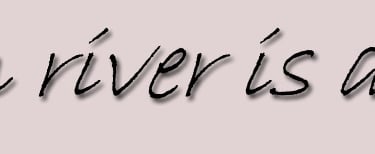



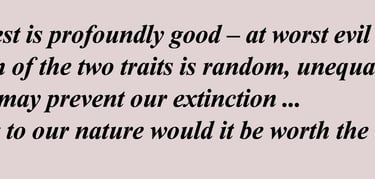


Anthony J Richter October 2024
and its











